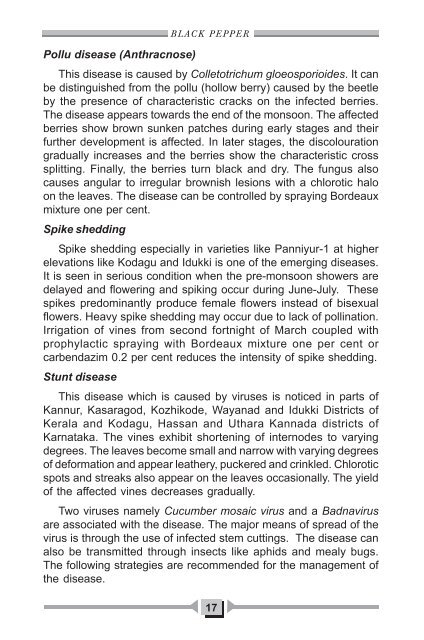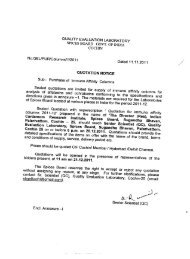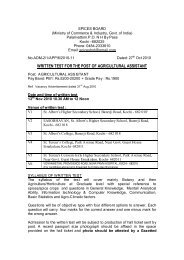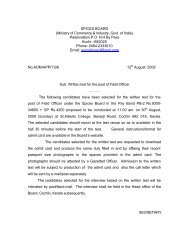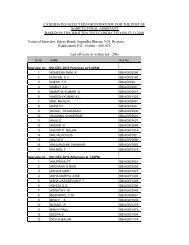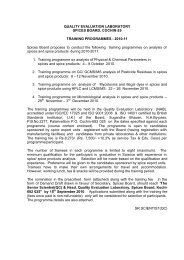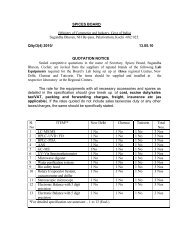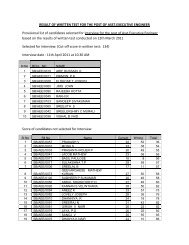Book-Black Pepper POP.pmd - Spices Board India
Book-Black Pepper POP.pmd - Spices Board India
Book-Black Pepper POP.pmd - Spices Board India
Create successful ePaper yourself
Turn your PDF publications into a flip-book with our unique Google optimized e-Paper software.
BLACK PEPPER<br />
Pollu disease (Anthracnose)<br />
This disease is caused by Colletotrichum gloeosporioides. It can<br />
be distinguished from the pollu (hollow berry) caused by the beetle<br />
by the presence of characteristic cracks on the infected berries.<br />
The disease appears towards the end of the monsoon. The affected<br />
berries show brown sunken patches during early stages and their<br />
further development is affected. In later stages, the discolouration<br />
gradually increases and the berries show the characteristic cross<br />
splitting. Finally, the berries turn black and dry. The fungus also<br />
causes angular to irregular brownish lesions with a chlorotic halo<br />
on the leaves. The disease can be controlled by spraying Bordeaux<br />
mixture one per cent.<br />
Spike shedding<br />
Spike shedding especially in varieties like Panniyur-1 at higher<br />
elevations like Kodagu and Idukki is one of the emerging diseases.<br />
It is seen in serious condition when the pre-monsoon showers are<br />
delayed and flowering and spiking occur during June-July. These<br />
spikes predominantly produce female flowers instead of bisexual<br />
flowers. Heavy spike shedding may occur due to lack of pollination.<br />
Irrigation of vines from second fortnight of March coupled with<br />
prophylactic spraying with Bordeaux mixture one per cent or<br />
carbendazim 0.2 per cent reduces the intensity of spike shedding.<br />
Stunt disease<br />
This disease which is caused by viruses is noticed in parts of<br />
Kannur, Kasaragod, Kozhikode, Wayanad and Idukki Districts of<br />
Kerala and Kodagu, Hassan and Uthara Kannada districts of<br />
Karnataka. The vines exhibit shortening of internodes to varying<br />
degrees. The leaves become small and narrow with varying degrees<br />
of deformation and appear leathery, puckered and crinkled. Chlorotic<br />
spots and streaks also appear on the leaves occasionally. The yield<br />
of the affected vines decreases gradually.<br />
Two viruses namely Cucumber mosaic virus and a Badnavirus<br />
are associated with the disease. The major means of spread of the<br />
virus is through the use of infected stem cuttings. The disease can<br />
also be transmitted through insects like aphids and mealy bugs.<br />
The following strategies are recommended for the management of<br />
the disease.<br />
17


